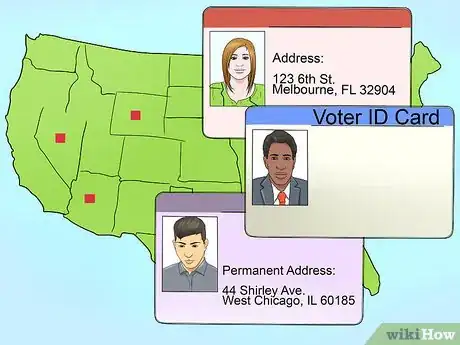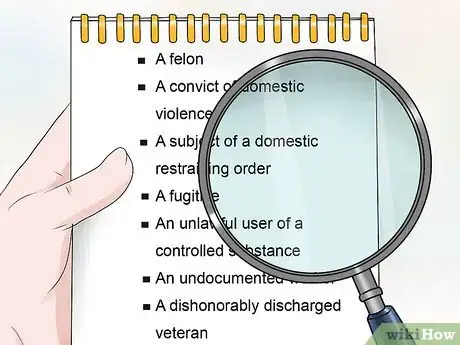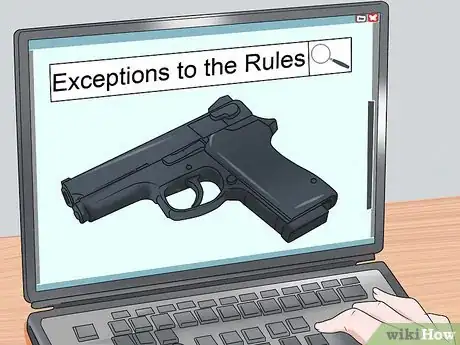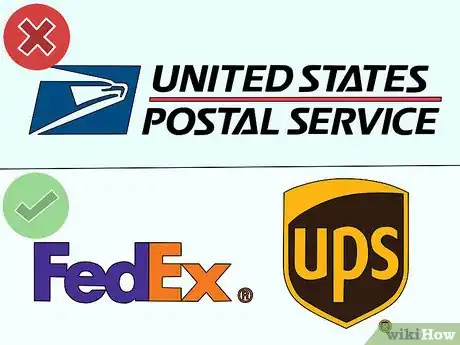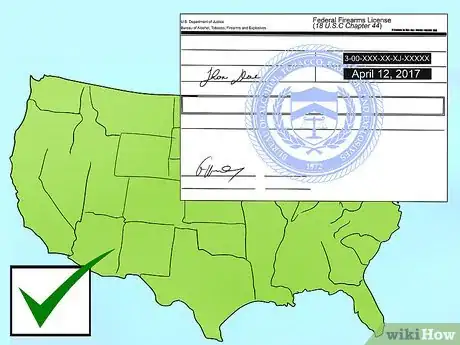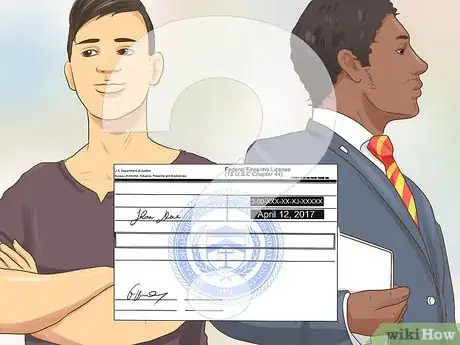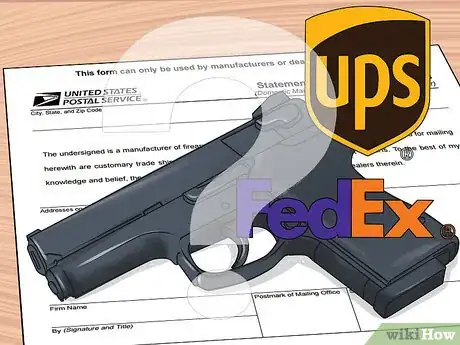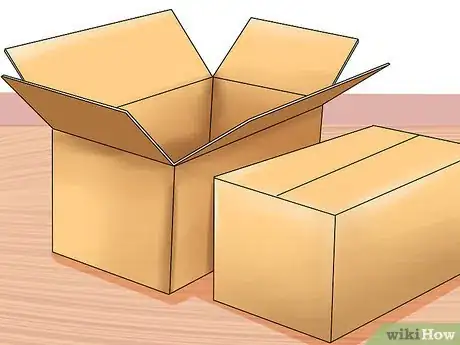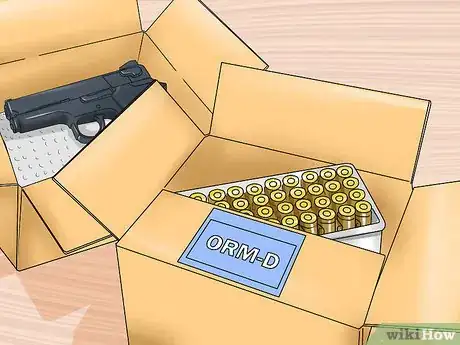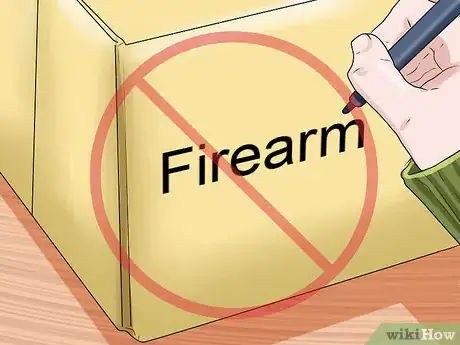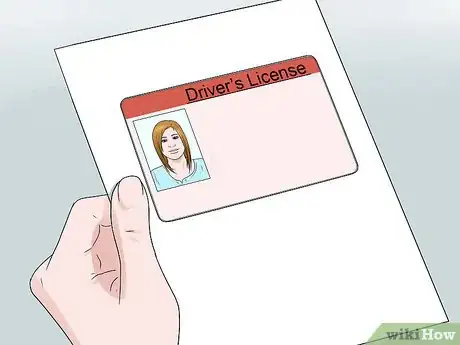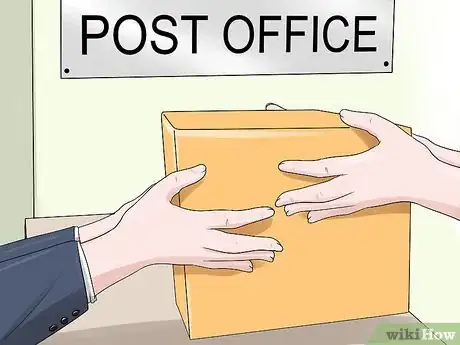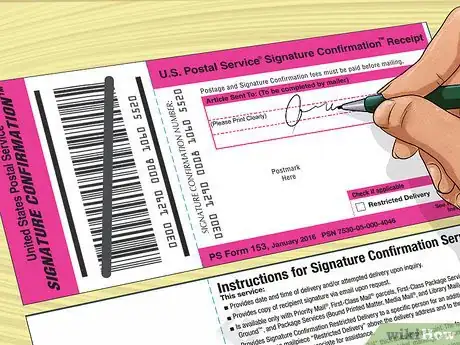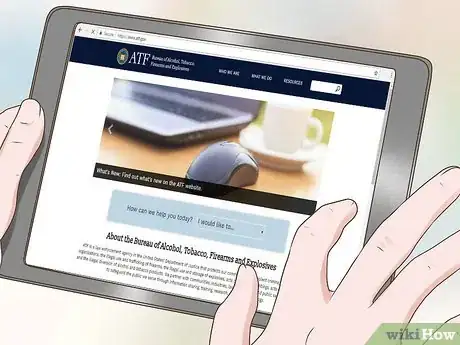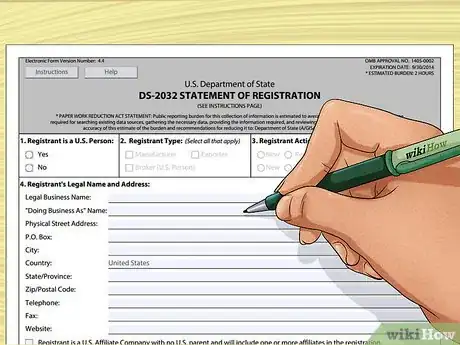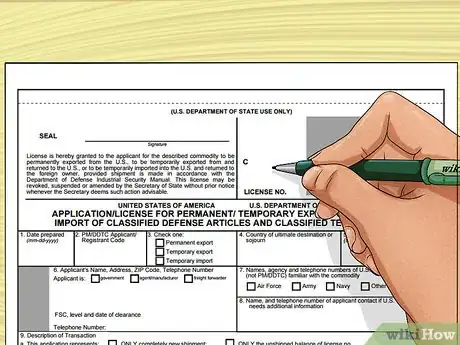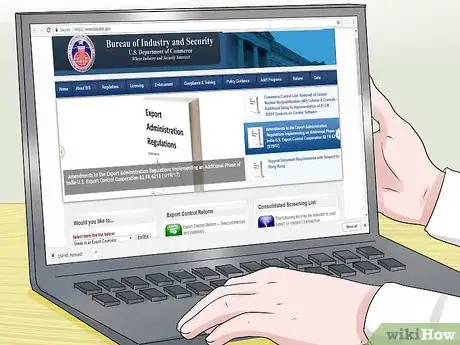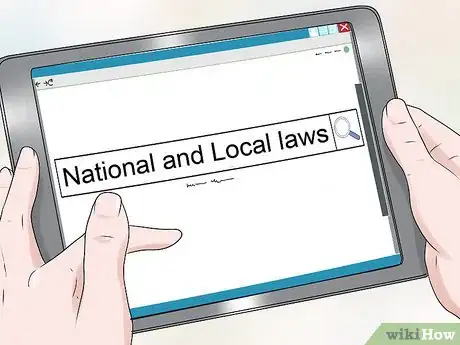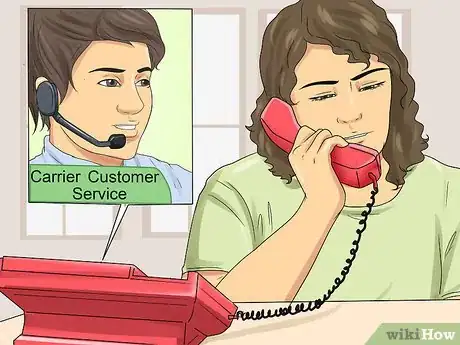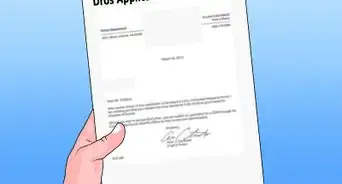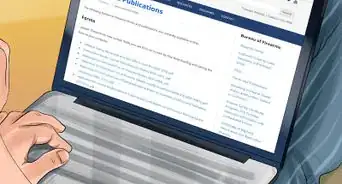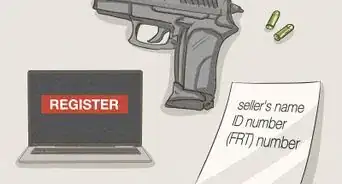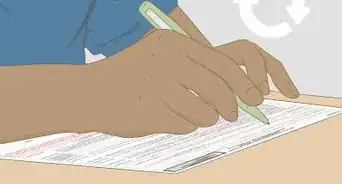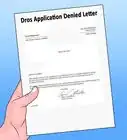This article was co-authored by wikiHow Staff. Our trained team of editors and researchers validate articles for accuracy and comprehensiveness. wikiHow's Content Management Team carefully monitors the work from our editorial staff to ensure that each article is backed by trusted research and meets our high quality standards.
There are 12 references cited in this article, which can be found at the bottom of the page.
This article has been viewed 360,159 times.
Learn more...
Mailing dangerous items like firearms can be a tricky business. If you don’t hold a valid Federal Firearms License (FFL), you’re not legally authorized to manufacture or sell firearms in the United States. Therefore, you need to know the restrictions you’ll have to work within when you mail a firearm in the U.S. If you do hold an FFL, you’ll have more shipping options, but you still need to obey the law. No matter what your status is, knowing your legal obligations will make the shipping process go more smoothly.
Steps
Shipping without an FFL
-
1Find out where you may ship. As a non-licensee, you can ship anywhere within your state of residence. Don’t send firearms to other states or countries. If you need to ship your firearm out-of-state for repairs, you can only do it through an FFL holder.[1] The Bureau of Alcohol, Tobacco, and Firearms (ATF) defines your state of residence as:
- The state where you’re physically present and have the intention of staying indefinitely.
- The state where you’re registered to vote.
- The state(s) where you live for substantial parts of the year.
-
2Determine who you may ship to. You are legally allowed to ship to anyone, including other non-licensees. Have your recipient show you a copy of their firearm license or other documentation proving that they can legally own a firearm. You can also conduct a background check on your potential recipient by making sure they aren’t:
- A felon
- A convict of domestic violence
- A subject of a domestic restraining order
- A fugitive
- An unlawful user of a controlled substance
- An undocumented worker
- A dishonorably discharged veteran
- A former U.S. citizen (who has renounced their U.S. citizenship)
- Someone declared mentally deficient or involuntarily committed to a mental institution.[2]
-
3Research the exceptions to the rules. You are allowed ship to a firearm to yourself in a different state. However, only you may open and take possession of the package. If you’re relocating to a different state, you may pack your firearms and ship them with the rest of your belongings. Before doing so, check that the type of firearm you’re moving is in compliance with that state’s laws and local ordinances.[3]
-
4Use an approved shipping carrier. Don’t ship handguns through the United States Postal Service (USPS). USPS does not accept handguns for shipment from non-licensees. If you want to ship a handgun as a non-licensee, you will have to use a commercial carrier like FedEx or UPS.
- As a non-licensee, you may only rifles or shotguns through USPS.
Shipping with an FFL
-
1Look into where you can ship. As a Federal Firearms License (FFL) holder, you may ship to any state in the United States. Don’t try to ship a firearm internationally without proper authorization. Familiarize yourself with any laws or restrictions in the state or locality you’re shipping to.[4]
-
2Find out who you can ship to. If you are shipping to a different state, federal law requires the recipient to hold a current, valid FFL. You also can ship within your state of residence to non-licensees and FFL holders.
- If you’re shipping out-of-state to an FFL holder, have them fax, email, or mail you a copy of their FFL license certificate. Ship only to the person and address listed on the certificate.
- When shipping to non-licensees, conduct a background check to make sure they aren’t:
- A felon
- A convict of domestic violence
- A subject of a domestic restraining order
- A fugitive
- An unlawful user of a controlled substance
- An undocumented worker
- A dishonorably discharged veteran
- A former U.S. citizen (who has renounced their U.S. citizenship)
- Someone declared mentally deficient or involuntarily committed to a mental institution.[5]
-
3Determine how you’re allowed to ship. You may ship handguns, rifles, and shotguns through the USPS, UPS, and FedEx. File USPS Form PS 1508 with the branch where you’re shipping the handgun. If you want to ship a handgun by USPS, try to find a local licensed dealer to ship it via USPS for you.[6]
Shipping within the United States
-
1Choose your box. Consider visiting gun stores to find used boxes. This will save you the hassle of cobbling together your own boxes and risk having it rejected by the shipper. Choose over-sized boxes to prevent your package from being stolen en-route.
- If you’re shipping via UPS, use a new corrugated cardboard box that meets the Single Wall Box Strength Guidelines.[7]
-
2Pack the box well. Use bubble wrap or other high-quality padding. Contact the carrier you plan to use. Ask a staff member to recommend packing material appropriate for a firearm. Ask your local gun store if they wouldn’t mind parting with their used packing material.
- Avoid wadded up newspaper, plastic wrap, or baby diapers. These won’t cut it. If the firearm is damaged in shipping, claims against the carrier may be denied if your packaging was substandard.
-
3Ditch the ammo. Ship it separately. Federal law prohibits the shipping of ammunition with firearms. Pack it securely in separate boxes or metal clips that fit snugly within the main package. Make sure the ammo containers can’t be opened in transit.[8] Clearly label the package as containing ammunition. Visit UPS.com, FedEx.com, or USPS.gov to print the required ORM-D label or black and white diamond to designate your package as explosive.
- You must bring packages with ammunition directly to a staffed carrier location. Don’t deposit them in public mailboxes or drop boxes.
-
4Don’t label the package. Avoid writing “Firearm” or other references to the specific contents of the package. This ban includes preprinted areas on your box, your business return address, and the shipping address. If words like “gun,” “firearm,” or “boom-stick” are on anything, take them off.[9]
-
5Include your details. Insert a photocopy of your state-issued photo ID into the package if you are shipping to an FFL holder. They are required to keep a record of who shipped the firearm. It’s also an appreciated courtesy to include your driver’s license details.
-
6Bring your package to the carrier. Take your box directly to a staffed post office or commercial carrier. Don’t leave your package in a public mailbox or drop box.[10]
- If you’re an FFL holder shipping out of state, print a copy of the recipient’s FFL license to show the mail carrier should they require it.
-
7Register your shipment. Ask for delivery confirmation. This will ensure that your package reached its destination. USPS recommends, but doesn’t require, this service.[11] UPS requires “Delivery Confirmation Adult Signature Required” service.[12] FedEx requires senders to choose either “Direct Signature Required” or “Adult Signature Required.”[13]
-
8Disclose the contents verbally. Tell the carrier that the package you’re asking them to deliver contains a firearm. Be prepared to open your package to verify that there is no ammunition packed with the firearm.
- Dealers shipping handguns through the USPS must notify the carrier and complete a form. Private carriers (like FedEx and UPS) will usually, but not always, require notification.
Shipping Internationally
-
1Visit ATF.gov. You can only ship firearms internationally if you hold a valid FFL. The process of lawfully exporting firearms is a very complex one. Closely read the ATF’s codes and guidelines to learn your rights and responsibilities.
-
2Register with the Directorate of Defense Trade Controls (DDTC). This area of the State Department oversees the first step to becoming a licensed firearms exporter. Complete the DS-2032 Statement of Registration Form. It takes an average of 45 to 60 days for forms to be reviewed. After submission, you’ll receive a confirmation email and instructions on how to check the status of your request.
-
3Apply for an export license. After the DDTC approves your registration, you can apply for the export license. Complete Form DSP-85 and follow all instructions closely. Submit it electronically through the DTrade portal. You’ll receive a confirmation email after you submit your application. Read the message for instructions on how to check the status of your application.
-
4Determine other permits you might need. Consider what items you plan to ship. If they extend into the category of sporting weapons or assault weapons, you’ll need additional licenses.
- Sporting rifles, shotguns, and ammunition are regulated by the Commerce Department. Visit https://www.bis.doc.gov/. On the drop-down list on the left, choose “Speak to an Export Counselor.” Click Enter, and choose one of the three phone numbers at the top of the page.
- Machine guns, silencers, short-barreled shotguns/rifles, and other firearms classified as Class 3 weapons under the National Firearms Act (NFA) require additional documentation. Complete ATF Form 9, the Application and Permit for Permanent Exportation of Firearms.[14]
-
5Research national and local laws. Before you ship your package, make sure you’re complying with the laws of the country or locality you’re shipping to. Penalties for violating these laws vary greatly, so take the time to conduct thorough research. Some countries restrict the import of specific types of firearms or parts of firearms. Other countries forbid private citizens from owning firearms outright. For example:
-
6Check regulations with carriers. You can follow most of the instructions for domestic shipping when shipping internationally. However, different carriers place different restrictions on what can be sent and where. For example, FedEx prohibits the shipping of firearms and ammunition to Canada.[17] Ask carriers about their policies on:
- Restricted items
- What to include in the package, such as proof of export license(s) or FFL documentation
- Packing materials required for longer distances
- Weight limits
- Labeling of the package
- Delivery confirmation
Community Q&A
-
QuestionCan I ship my firearm to myself with a copy of my permit to a residence where I will have an extended stay?
 Community AnswerThere is no federal law prohibiting you from shipping your own gun to yourself in another state for use in hunting or any other lawful purpose. However, it must be lawful for you to have that kind of firearm in the other state. This also applies to handguns but as a practical matter, it is not possible. Even though federal law does not prohibit you from sending your own handgun to yourself in another state, commercial carriers such as UPS and FEDEX have company policies that prevent you from sending a handgun to any party out of your own state that is not an FFL holder.
Community AnswerThere is no federal law prohibiting you from shipping your own gun to yourself in another state for use in hunting or any other lawful purpose. However, it must be lawful for you to have that kind of firearm in the other state. This also applies to handguns but as a practical matter, it is not possible. Even though federal law does not prohibit you from sending your own handgun to yourself in another state, commercial carriers such as UPS and FEDEX have company policies that prevent you from sending a handgun to any party out of your own state that is not an FFL holder. -
QuestionCan I ship the individual parts of the gun in separate packages?
 Community AnswerMostly, yes. You are able to ship almost all of the parts of a gun except for the receiver. For example, if you want to ship an AR-15, you can ship the barrel, stock, grip, handguard, upper receiver, and trigger, but you cannot ship the lower receiver. The lower receiver is what is tracked by the ATF and is considered the "gun" portion of the firearm.
Community AnswerMostly, yes. You are able to ship almost all of the parts of a gun except for the receiver. For example, if you want to ship an AR-15, you can ship the barrel, stock, grip, handguard, upper receiver, and trigger, but you cannot ship the lower receiver. The lower receiver is what is tracked by the ATF and is considered the "gun" portion of the firearm. -
QuestionCan I ship a gun to another person as a gift if it's going out of state?
 Community AnswerNo, you can only ship rifles and shotguns out of state to yourself. If you want to gift a firearm out of state, you must ship them to a FFL (gun store) in the receiptients home state. He can then fill out the proper paperwork and take ownership of the firearm.
Community AnswerNo, you can only ship rifles and shotguns out of state to yourself. If you want to gift a firearm out of state, you must ship them to a FFL (gun store) in the receiptients home state. He can then fill out the proper paperwork and take ownership of the firearm.
References
- ↑ https://www.atf.gov/resource-center/docs/0501-firearms-top-10-qaspdf/download
- ↑ http://www.law.cornell.edu/uscode/text/18/926A
- ↑ https://www.atf.gov/resource-center/docs/0813-firearms-top-12-qaspdf/download
- ↑ http://pe.usps.com/text/pub52/pub52c4_009.htm
- ↑ http://www.law.cornell.edu/uscode/text/18/926A
- ↑ http://about.usps.com/forms/ps1508.pdf
- ↑ https://www.ups.com/content/us/en/resources/ship/packaging/guidelines/firearms.html
- ↑ https://www.ups.com/content/us/en/resources/ship/packaging/guidelines/firearms.html
- ↑ https://www.atf.gov/firearms/qa/may-nonlicensee-ship-firearm-through-us-postal-service
- ↑ https://www.ups.com/content/us/en/resources/ship/packaging/guidelines/firearms.html
- ↑ http://pe.usps.com/text/pub52/pub52c4_009.htm
- ↑ https://www.ups.com/content/us/en/resources/ship/packaging/guidelines/firearms.html
- ↑ https://www.fedex.com/en-us/delivery-options/signature-services.html
- ↑ https://www.atf.gov/firearms/qa/does-licensee-need-export-license-export-firearm
- ↑ http://www.rcmp-grc.gc.ca/cfp-pcaf/fs-fd/import-importer-eng.htm
- ↑ https://www.gov.uk/government/uploads/system/uploads/attachment_data/file/518193/Guidance_on_Firearms_Licensing_Law_April_2016_v20.pdf
- ↑ https://www.fedex.com/en-ca/shipping-services/international/regulatory/firearms.html
About This Article
To mail a firearm without a Federal Firearms License, or FFL, you can only ship within the state where you live. Have the other party show you documentation proving they can legally own a firearm, or conduct a background check to ensure the person isn’t a felon, a fugitive, or otherwise disqualified from owning a gun. Ship the firearm through a commercial carrier, as you can not send it through the postal service. To learn how to ship a firearm with a Federal Firearms License, keep reading!
